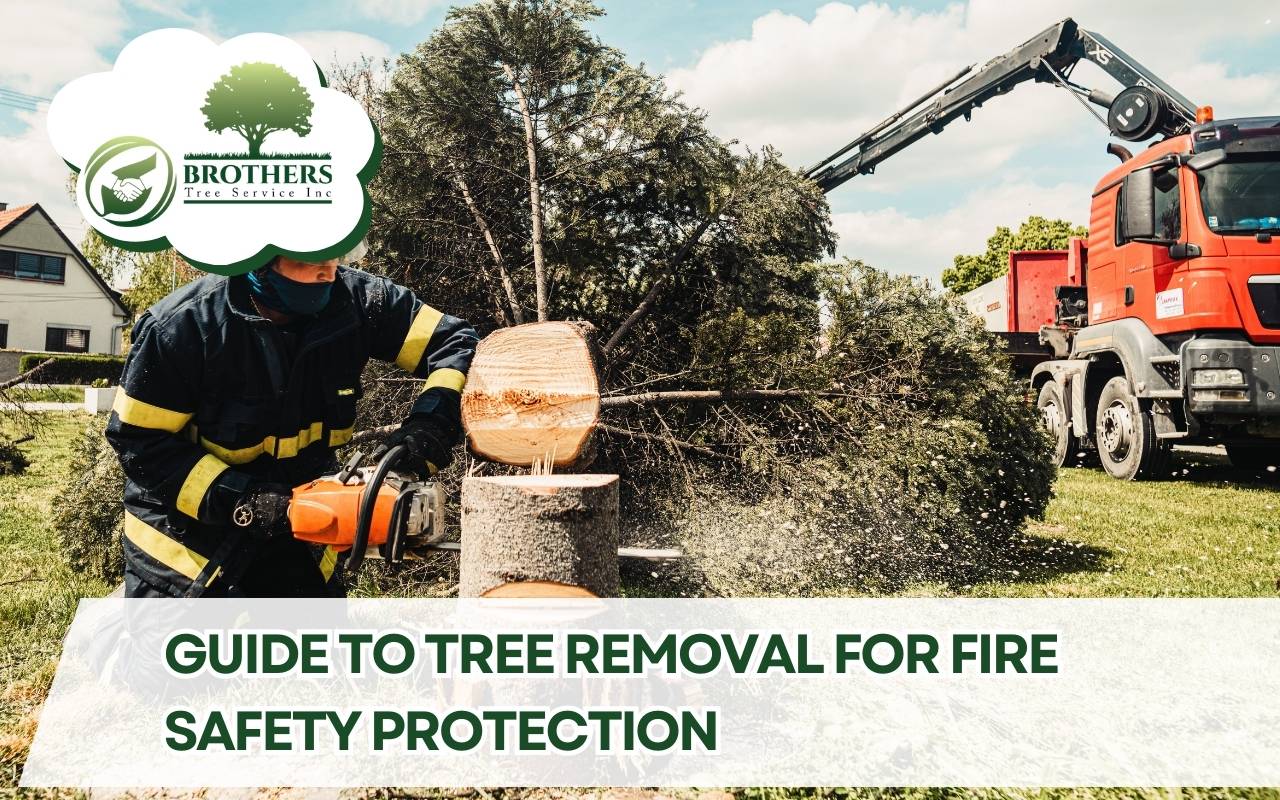
As wildfires increase in frequency, the urgency of protecting homes grows stronger. One essential strategy is tree removal for fire safety. This method reduces risks of uncontrollable fire spread. It safeguards both property and lives. Many homeowners hesitate to cut trees due to their beauty and environmental value. However, balancing aesthetics with fire prevention is critical. Strategic tree removal creates defensible space and minimizes fuel for flames. The following guide explains practical steps…
Importance of Tree Removal for Fire Safety
Dense tree canopies and low branches pose serious hazards when wildfires ignite. Dead wood and close proximity to buildings allow flames to spread quickly. By prioritizing tree removal for fire safety, homeowners reduce intensity and protect rooftops. This measure creates defensible spaces and strengthens community resilience. It also clears roadways and evacuation routes for firefighters. Neighborhoods that adopt coordinated removal strategies face fewer damages. Therefore, investing in tree removal for…
Learn more in our services page.
Understanding Fire Behavior and Tree Vulnerability
- Fire behavior is influenced by fuel, weather, and topography.
- Dry leaves, branches, and bark significantly increase fire intensity.
- Resinous trees and those with thin bark ignite faster and burn hotter.
Knowing tree vulnerability helps you plan tree removal for fire safety effectively. By assessing species traits, homeowners shape landscapes resistant to flames.
Identifying High-Risk Trees on Your Property
Effective tree removal for fire safety starts with a clear assessment. Focus on trees closest to structures and driveways. Dead, diseased, or dying trees should be removed first. Signs include brittle branches, peeling bark, or fungal growth. Pines and eucalyptus are high-risk species due to resin content. Trees with low-hanging branches or dense lower limbs require trimming or removal. A targeted plan maximizes fire protection and preserves healthy vegetation. For expert help, explore our
Creating Defensible Spaces Through Strategic Tree Removal
- Immediate zone (0–30 feet): remove risky trees and clear low branches.
- Extended zone (30–100 feet): thin dense stands and maintain spacing between crowns.
- Always remove ladder fuels that allow flames to climb into canopies.
Defensible spaces slow advancing flames and protect your property. Regular tree removal for fire safety integrated into maintenance creates safer neighborhoods.
Tools and Equipment Needed for Safe Tree Removal
Proper tools ensure safety and efficiency. Essential equipment includes chainsaws, pruning shears, helmets, gloves, and protective chaps. Larger projects require pole saws, ropes, ladders, and chippers. Always maintain tools to avoid accidents. Blades should stay sharp and ropes must be inspected. Poorly kept equipment increases risks and reduces effectiveness. For complex work, consider hiring professionals instead of attempting hazardous removals alone. You can also review our
Hiring Professionals for Tree Removal Services
Tree removal for fire safety near power lines or steep slopes requires experts. Certified arborists have the training and equipment to handle risks safely. Always verify licenses, insurance, and references. Reputable companies inspect sites, create work plans, and explain safety methods. Hiring professionals ensures compliance and reduces liability. Trusted contractors follow best practices and help homeowners achieve fire protection goals.
FAQs About Tree Removal for Fire Safety
Why is tree removal for fire safety important?
It reduces fire intensity, prevents flames from spreading, and creates safer defensible spaces around homes.
Which trees should be removed first?
Dead, diseased, or resin-rich trees close to homes or driveways are top priorities.
Can I remove hazardous trees myself?
Small trees can be DIY projects with proper tools, but large or risky jobs require professionals.
What happens to the removed tree debris?
Debris can be chipped, hauled to green waste sites, or safely used as nonflammable mulch.
How often should tree removal for fire safety be considered?
Assess trees annually, especially before fire season, and after storms or drought periods.
Proper Disposal of Removed Trees and Debris
After removal, proper disposal prevents new hazards. Options include chipping, hauling, or bundling debris. Always follow local regulations before burning. Do not store piles near buildings. Chipped materials can be groundcover in safe areas. Larger logs may become firewood. Responsible disposal supports safety and sustainability.
Maintaining Fire-Resistant Landscaping After Tree Removal
Once high-risk trees are gone, keep landscaping fire-resistant. Plant succulents, deciduous shrubs, and moisture-rich groundcovers. Apply noncombustible mulch near structures. Maintain irrigation systems and clear fallen leaves. Ongoing care reinforces your property’s defenses and complements tree removal for fire safety. Contact our team today for guidance.
Local Regulations and Permits for Tree Removal for Fire Safety
Before tree removal, understand local ordinances and HOA rules. Permits may be required for certain species or tree sizes. Noncompliance risks fines or legal issues. Contact local planning departments for guidance. Some areas offer expedited permits or rebates for fire safety actions. Compliance ensures both legality and alignment with community fire prevention efforts.
Ensuring Fire Safety Through Responsible Tree Management
Strategic tree removal for fire safety strengthens wildfire preparedness. Identifying risks, creating defensible space, and proper disposal reduce threats. Whether hiring professionals or managing smaller tasks, following best practices ensures effective results. Responsible tree management, combined with sustainable landscaping, empowers communities to resist growing wildfire dangers.
